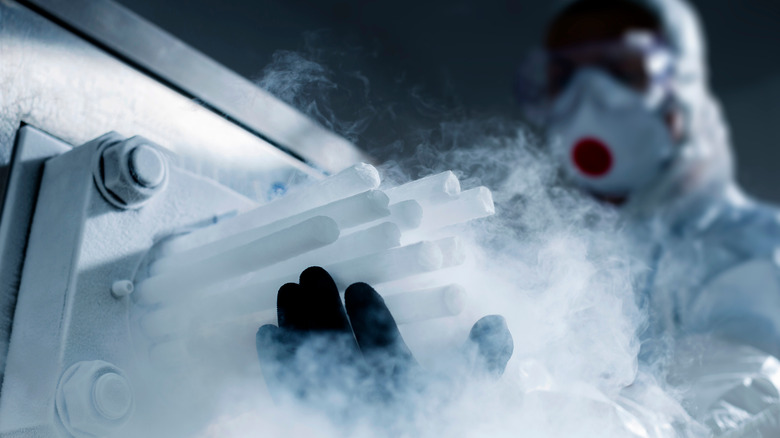Dry Ice Could Save Your Car. Here's How
Dry ice is a unique compound that serves many disparate purposes. Dry ice can be used as a cooling mechanism on a hot, sunny day, or even to remove a wart or mole on a patient (via Irish Carbonic). Dry ice can break adhesive bonds, rapidly cool a space, and it can even be used as a supplement to firefighting efforts because the substance sucks up oxygen, which is a crucial element in sustaining a fire. Dry ice is also a key element in creating fun backyard science experiments!
The use cases for dry ice are many, and industrial leaders have utilized dry ice for cleaning purposes for many years, according to Cold Jet. New advancements in the world of car care have brought dry ice into the forefront, and now customers are driving away with vehicles that look and perform as if they were brand new. Cleaning the car has continued to be an important task for drivers, and this technology can amplify the effectiveness of that process.
How Stuff Works notes that dry ice is simply carbon dioxide in a frozen state of matter. The extremely cold temperature of a block of dry ice (-109.3 degrees Fahrenheit) makes it a potent tool for mechanics, industrial fabricators, and car owners alike. Leveraging dry ice in your car care routine can transform the way you think of cleaning and protecting this important mode of transportation.
Dry ice is an efficient tool for fixing small dents
One incredibly useful feature of dry ice lies in its ability to transform the temperature of affected material in rapid order. Changing the temperature of a piece of metal or some other material can often result in dramatic warping of the material's face. If dry ice is applied to a surface that has been crushed, it can often result in a reversal of the deformation. This is why car owners have been using dry ice to remove minor dents and dings in the bodies of their vehicles for years. Penguin Dry Ice reports that holding dry ice against a minor bend in the body of your car, followed by reheating with sunlight or a hairdryer, can successfully remove the problem.
When it comes to damage resulting from hailstones, children in the neighborhood, or a minor collision in a parking lot, dry ice provides amazing cost-effectiveness for fixing body damage. Of course, one thing that should be noted is that with this rapid change in temperature and the expansion of material comes the potential for paint damage. Materials Letters notes that dry ice can be used to quickly strip away paint from a surface, and this side effect may impact the car in an unintended way. Therefore, it's always best to use caution whenever handling dry ice around your car.
New service providers are using dry ice as a cleaning solution
Even though dry ice has been used in the automotive world to remove dents for some time, new approaches to cleaning have been developed recently. Cars Insider notes that a combination of dry ice and high pressure can result in a cleaning method for the undercarriage of a vehicle that resembles sandblasting. Yet, the use of dry ice through this method applies a cleaning power that doesn't rely on harsh particles or intense collisions with the substrate material.
The evidence for the efficacy of this approach to small-part and crevice scrubbing is immense. Unlike the use of a sponge or even a toothbrush, dry ice blasting can reach even the smallest nooks and crannies in the recesses of your vehicle's underbelly. This means that a professional can scrub away years of grime and grit that have built up across the entire surface with little effort. Driving away in what feels like a brand-new car is entirely possible with the use of dry ice for cleaning. Cars Insider notes that the best approach here is to use small swirling motions and continuously maintain movement across the surface of whatever is being worked on.


